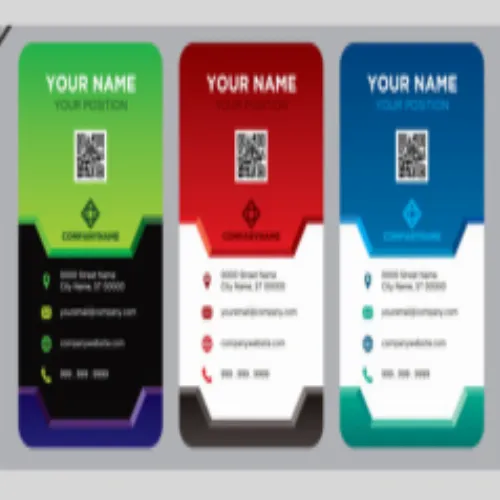Standard Business Card: Common Mistakes You Should Avoid

A standard business card looks like a simple piece of paper, but it has a much greater chance of making a lasting impression on clients, customers and business partners. In the digital age where physical interaction is more and more common, a visual business card can identify you and demonstrate your professionalism. However, there are some common mistakes when designing and using business cards. We will give you valuable information on how to spot and avoid these mistakes.
1. Overcrowding Information
One of the most common business card mistakes is trying to include too much information. While it's important to include important information such as your name, job title, company name, contact information, and website, any long list of social media IDs, job descriptions, or services overloads the card and makes it visually overwhelming. Keep it clean and simple so that the information is easy to read and contains plenty of space.
2. Poor Font Choices
The font style and size you choose plays an important role in the readability and overall appearance of your card. Using fonts that are too fancy or unclear can make it difficult for recipients to quickly read your contact information. Stick to clean, professional fonts that are easy to read. Make sure the font is correct, not too small and not too big.
3. Low-Quality Printing
Your business card is a direct reflection of the professionalism of your business, and presenting a badly printed business card can create a negative impression. Avoid using cheap paper or printing services as this can make your card look unprofessional and flimsy. Invest in quality paper and printing to make a positive impact on the recipient.
4. Lack of Branding
Your business card should match your corporate identity and visual aesthetic. Avoid using generic templates that don't match your brand elements. Combine your logo, corporate colors and overall brand identity to create a cohesive and memorable card that reinforces your brand image.
5. Ignoring Bleed and Trim Lines
When designing a business card, it is important to consider the bleeds and trims required for printing. The spread ensures that the ink reaches the edges of the paper and avoids unwanted white edges. The dashed lines show where the card will be cut. Ignoring these important points can cause text or design elements to tear off during printing and ruin the look of the card.
6. Using Unconventional Shapes
While it's essential to stand out from the competition, using unconventional shapes for your business card can be risky. Unusual shapes might not fit into standard cardholders or wallets, making recipients more likely to discard them. Stick to the traditional rectangular shape, but get creative with the design and content to leave a lasting impression.
7. Incorrect Contact Information
It may seem obvious, but it's astonishing how often incorrect contact information is printed on business cards. Before sending your design to the printer, triple-check all the details for accuracy. A wrong phone number or email address can lead to missed opportunities and embarrassment.
Conclusion
A standard business card
remains an essential tool for networking and making a lasting impression on
potential clients and business partners. By avoiding these mistakes, you can
ensure that your business card represents you and your brand well, increase
your chances of building valuable relationships, and help your business grow.
Remember that simplicity, clarity and professionalism are key to creating an
effective standard business card.
